R.V. Doon's Blog, page 2
November 9, 2015
Cozy Mystery: What are ‘Gut instincts’?
Occasionally, I get clobbered by non-medical critics because my nurse sleuth in my Text-A-Nurse Cozy Mystery Series, uses her ‘nursing gut instincts” to solve crimes. Some claimed I’m inserting a paranormal element into my contemporary mysteries. What? You mean you’ve never experienced this phenomena? To be fair, Reece does have a little ‘shine’ on her, but there is no magical thinking involved in her crime solving.
Gut instincts are often called human, animal, or base instincts. In my case, it’s inserted to give Reece Carson, the nurse sleuth, a cutting edge to crime solving and to show she has a different viewpoint than the more methodical police/detectives she encounters. In real life, I knew a nurse who claimed to smell a change in condition before it happened. As for me, sometimes I noticed a change in skin color prior to it actually happening. Whenever this happened to us, we gave that patient a long second look. A nurse and other health care team members can make a huge difference in someone’s life by deterring an adverse event, which often weakens patients.
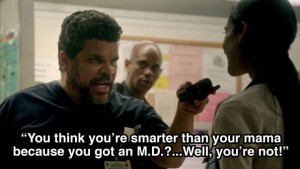
Now Reece Carson ignites her ‘nursing instincts’ described as well-honed from working in critical care units, by writing a backward style nursing care plan for her dead victims. This is a private joke for any nurse reading the series, because nursing care plans are the bane of a nurse’s existence. Mostly because remembering to update them is problematic, since some patients exhibit a roller coaster of symptoms right up to transfer or discharge. So, I made the dreaded paperwork an important crime solving tool because doing so turns on her ‘instincts’.
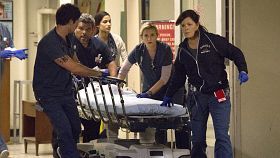
Nurses and doctors are frequently shown in the TV hit Code Black as working from their instincts. The ER is ground zero for developing instincts that are based on previous experience. In a nutshell, their super-trained instincts are processing the data they are frequently recording, and whammo an alert smacks them upside the head. They go looking for the problem or remember a unique way to solve it, and make adjustments as appropriate to stop their patient from circling the drain. In real life ‘code situations’, life or death for realz to you non-medical types, it’s a kind of knowing what to do without even thinking about it.
But don’t believe me. Believe Yo Daddy, the wonderful Marcia Gay Harden, in the second episode of Code Black called We Plug Holes. Daddy tells Dr. Angus Leighton that he let another resident talk him out of following his instincts when he suspected his patient had an aortic aneurysm. She said, “Ignore your instincts at your own peril.”
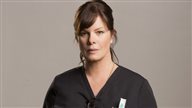
Following your instincts is so important in life and death moments that she speaks to the staff about it again. I videotaped a short excerpt off my TV. Hopefully it works, but may be shaky.
Check out the Text-A-Nurse and turn on your gut instincts!

The Text-A-Nurse Cozy Mystery Series
October 15, 2015
Rh Negative Blood: Neanderthals Not Responsible
Before I proceed, I’d like to indulge and share my moment of magical thinking, and admit I’d hoped to get some answers from the Neanderthal DNA on RhD disease. Sadly, there were no new answers, so I’ll proceed with the debunking for those few people who want science facts and not magical thinking.
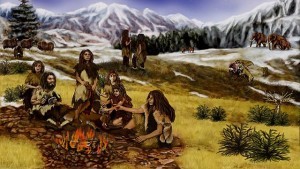
When Paabo Savante’s team gave us our first glimpse into Neanderthal DNA, the first thing people who search for historical answers to the RhD deletion noticed, was two Neanderthal males had O blood type. This is all the facts some people needed to declare that Neanderthal interbreeding with humans, caused the RhD deletion. After all they pointed out, Neanderthals passed red hair, pale skin, and light-colored eye genes to Homo sapiens. Correlating eye and hair color to having Rhd doesn’t make sense, genetically, but this myth persists.
Dr. Marion Reed and Dr. Ian Shine (both authors of many books on blood types or genetics) stated in their book, The Discovery and Significance of the Blood Groups, that “blood type O gene is a variant of the blood type A gene. Thus, blood type O actually appeared later than the other ABO Groups.” Blood group A and B are dominant genes and blood group O is recessive. (See page 104) This fact can’t be disputed since our genetic DNA code was mapped in 2003.
Dr. Carles L. Fox, et. al (Genetic characterization of the ABO blood group in Neandertals) wanted to study the Neanderthal O blood. “The high polymorphism rate in the human ABO blood group gene seems to be related to susceptibility to different pathogens. It has been estimated that all genetic variation underlying the human ABO alleles appeared along the human lineage, after the divergence from the chimpanzee lineage. A paleogenetic analysis of the ABO blood group gene in Neandertals allows us to directly test for the presence of the ABO alleles in these extinct humans.” The Fox team concluded, “The genetic change responsible for the O blood group in humans predates the human and Neandertal divergence.” This means Neanderthals didn’t give us our O alleles.
Many scientific teams proceeded to crack the DNA code for Neanderthal man. An earthquake in evolutionary science occurred, and this feat gave us new information about disease-carrying genes the Neanderthals passed to us, like Crohn’s Disease, Diabetes Type 2, and Biliary Cirrhosis. So scientists are aware of what we received and didn’t receive from the Neanderthals. This isn’t to say new information won’t be discovered, especially in protein chemistry, in the future. For now, please look at table 2 in this ground breaking article-A Draft Sequence of the Neandertal Genome. It lists Amino acids changes that are fixed in present day humans, but ancestral in Neanderthals. What you get are the genetic markers, their position, and their description and function. No markers are listed for ABO or RhD.
A geneticist from Stanford, Dr. Barry Starr in 2013 pointed out that RhD deletion didn’t come from Neanderthals. (Read blog post) He asked another scientist, Dr. Bill Flegel of the National Institute of Health for his thoughts. Dr. Flegel stated in the blog post that RhD deletion occurred in Africa before modern man left in the migration wave out of Africa. Note Flegel has written many articles on RhD and interpreted a lot of genetic tests along the way.
Nova spoke with Paabo Savante, who opened up the field of evolutionary genetics, and other scientists, about the DNA discoveries of Neanderthal DNA (read Nova transcript). It also confirmed that the interbreeding between Homo Sapiens and Neanderthals resulted in Neanderthals passing their genetics to us, but Homo Sapiens didn’t pass any of our genetic code to them. I mention this because when the two species intermingled there is evidence found on the Y chromosome that male offspring of this mating were sterile, but because we have their DNA in us, we know female offspring shared it. In conclusion we knows Neanderthals lived 300,000 years before modern humans arrived on their turf, and the genetics they passed to us may have helped us survive.
If you liked this article, please share on your social media! If you have information to share please comment, I’d love to hear from you. I’m hoping now that evolutionary genetics has exploded that a scientist will soon be able to tell us what caused our Rh negative blood. My bet is still on a viral disease, what’s yours?
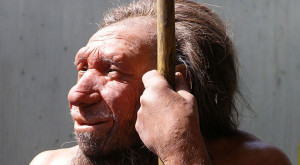
September 27, 2015
Cozy Mystery Series: Text-A-Nurse
Hi Doon Fans! Or should I say Hi Reece Carson fans! In any event just getting the word out that Book 3 Body Magnet is free for the next 48 hours. Here’s the link:

The Text-A-Nurse Cozy Mystery Series
September 26, 2015
New Job Category: Guinea Pig
Well, I’ve lived to see the day when human volunteers for clinical drug research studies have managed to turn it into a bona-fide job. They also call themselves professionals. Go Pigs!

No joke! I’m talking real job. A real job as in quitting your low paying one and moving to cities where more phase 1 clinical research studies are frequently done. A job where your family thinks you’re traveling for work. A job where you join a group of like-minded guinea pigs and text only ‘members of your group’ details about the new gigs available.
Don’t get me wrong. The healthy subjects in the Atlantic Article: The Life of a Clinical-Trial Guinea Pig are the only subjects that get paid. That’s right. The rest volunteer for altruistic reasons-generally stated as >I don’t want my grandkids to face this disease>I want to help people>I’d like to see a healthier world for all. Some of the phase 2 and phase 3 volunteers are in studies for years with no pay, but all sincerely hope they are on the real drug and not a placebo. So, I’m all for seeing the phase 1 pigs paid for their work.
My very first clinical research trial (as the research nurse) had twelve medical students show up, all carrying a total of 100 pounds of medical books each, to study during their incarceration. (I mean, their week-long holiday adventure). I can still remember calling the PI and asking how all twelve students happened to be in his classes. He told me to go ask them if they had felt “pressure.” The volunteers laughed in my face. I learned later they were all lagging behind their fellow medical students, and volunteering was hinted at for extra points. I know, it was supposed to be against the rules, but hello, the real world is murky. ‘Drug world,’ the nickname I privately gave to the research milieu, because it rarely acknowledged the real world’s existence, will call foul over the truth in this article, even though they supposedly live in the real world at least part-time.
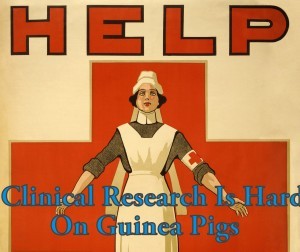
Below, are a few of the truth nuggets in the article: Well worth the read!
Stone said, he began sneaking into the bathroom after each dose and forcing himself to throw up the pill, to stave off the side effects. The staff didn’t catch on, he told me, and he didn’t share his trick with any of the other participants. “I figured I could get away with it if I kept my mouth shut.”
There are a few things most serious guinea pigs eventually learn. The first is: There’s such a thing as being too honest.
For studies looking for healthy subjects, the screening process generally comes in two steps. The first is over the phone, when guinea pigs call to express their interest. “A lot of places will ask if you’ve ever smoked a cigarette even once,” Stone said. “And if you say yes, boom, that’s the end of it. Sometimes you have to skirt around it.”
“It sounds selfish,” Helms said of the deception, “but the way it works is, I’m working poor, and the people making the drugs are filthy rich, and I need a job.”
Professionals may lie their way into a study, he says, but they also make it run more smoothly. “They need people who are reliable. Pro guinea pigs, we come where we’re supposed to be on time, we’re not afraid of needles. When you explain something it’s going to be understood because you know what’s going on,” he said. “It’s not going to be a disaster. The way disasters happen is when a guy comes in and he doesn’t know the ropes.”
Guinea Pigs Beware: While the article doesn’t mention deaths in phase 1 clinical drug trials, they have happened. Phase 1 studies are also the least regulated. Companies aren’t legally required to register a trial with Clinicaltrials.gov, the database maintained by the NIH, until it reaches Phase 2.
For interested readers my next medical thriller will feature a former drug discovery scientist. Coming soon!
September 18, 2015
A Nurses’s Skit Shakes ‘The View’
Who are these people on TV who live in an alternate parallel universe, but think they have something to say to the rest of us?
For those who couldn’t comprehend, Miss Johnson is a nurse “lifesaver” and she believes this is her most important and valuable talent. I found her skit refreshing and yes, it was a risk, but it was her decision to make. This post isn’t a debate about what is or isn’t a talent; this post is about the mean-spirited comments.
It’s time, no it’s past time, to kick the gossipy mean girls off the TV. If they’re too important in the alternate universe to kick off, then Turn-Them-Off. Every time I watch the so-called hosts of ‘The View’ gossiping about the participants in the Miss Universe contest, I feel sorry for them. I do. They may have some stature in the fake, parallel universe they live in, but here on the real world, the world the rest of us live in, they’re sad. Have they even listened to the episode in question?
Here’s Miss Colorado, Kelley Johnson, doing a nurse skit for her talent competition. She could’ve dolled herself up and put on a “costume”, but she kept it real. Yeah, here’s a newsflash for people in the fake alternate universe>>>Nurses in the real world look like Miss Thompson in the skit. Yeah, there are good-looking nurses in every hospital across the country. However, not every nurse can take to the public stage and confide a dramatic and most meaningful moment that defined her as a nurse. Miss Thompson shared a personal experience about an Alzheimer’s patient. I found it real. What ‘The View’ hosts found offensive, I don’t know. Here’s the clip. You tell me.
The second comment is about the “doctor’s stethoscope” hanging around her neck. As a retired nurse, let me reassure ‘The View’ hosts from the alternate universe that doctors borrowed my stethoscope thousands of times. The stethoscope is a health care tool used by nurses every day, multiple times a day. Maybe they’re using tricorders in the alternate verse, but if they accept a job talking to us in the real world, they need to get a clue about the world their viewers live in. I’m glad to see #NursesUnite take on the fake people from the alternate universe. Will someone please tell ABC executives that we want real people, familiar with real jobs in the real world, talking to the rest of us. Is that too much to ask?
If you haven’t seen the clip, here’s ‘The View’ in action:
By the way, Kelley Johnson finished as second runner-up. Way to go!
Related articles
 Nurses go after ‘The View’ for criticizing Miss America contestant
Nurses go after ‘The View’ for criticizing Miss America contestant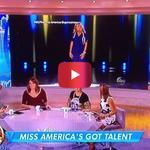 The ladies of “The View” are making enemies again and you won’t believe who they went after now
The ladies of “The View” are making enemies again and you won’t believe who they went after now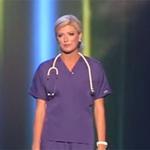 WATCH: Miss Colorado Shocked Everyone With Her Talent
WATCH: Miss Colorado Shocked Everyone With Her Talent
May 28, 2015
Cozy Home: Text-A-Nurse Cozy Mystery Series
Among the many questions I’ve received about my Text-A-Nurse cozy mystery series, the majority are about the historical home she inherited from her aunt. Most wanted to know if Reece’s blue house was made up or based on a local one.
Reece’s home is based on two local historical houses, but of course I added a few details of my own. Notably, in her house the bannister has vertical spindles in the shape of heart-tipped cupid arrows inside and out and the interior fireplace mantel is an ode to Cupid as well. The point is I take what I like and blend the real into the imaginary.
Below is the Beal-Gaillard historical home (1836).

Notice the Color?
Reece’s house is described as Wedgwood blue. Not only does Reece have a blue house, but a blue car as well. White homes and blue homes look beautiful against the spring green colors. What do you think?
I’ve always loved the Hardeway-Evans-Wilson-Sledge home for its graceful appearance under the oaks. (1840)
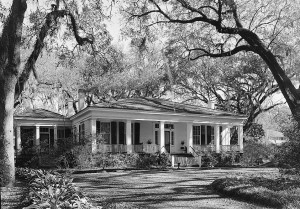
Both homes are from the 1800’s and I think both are beautiful. Reece was a hardworking critical care nurse experiencing major symptoms of burnout and exhausted from working chronic overtime. I hoped giving her a historical home would have a fairy-tale princess air about it, signaling changes in her life.
I’d love to answer any other questions readers may have about the series. As always thanks for the questions, I love reader comments.
Book update: The 4th book in the Text-A-Nurse series Body Double is speeding along. If you’d like to be notified of its release, please sign up for my new release subscription emails. You get a free short story, Body Grab, mentioned in Body Aches & Body Magnet. Body Grab is only available to subscribers. Here’s the link.
May 24, 2015
Rh Negative Blood: What’s in an enzyme?
Blood transfusions are life savers; especially for trauma victims. I don’t think the average non-medical person understands how many transfusions are occurring in Level I trauma centers across the country every single day. Trying to save a life in desperate situations can burn through a hospital’s supply of O negative blood in less than an hour.
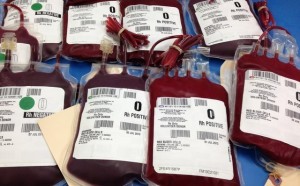
When scientists take on an issue such as cloning or artificial blood there are many “spin off” effects from the research. I was surprised to see there’s been a study to use lab-bred enzymes to change blood types A, B, & AB into “O” for transfusion purposes.
Of course they will not be injecting the enzymes into people; they will inject the enzymes into the donor bags. The blood will then be transfused into sick people.
Why try this?
Well, your loved one could die if O blood is unavailable and all the lab has is A, B, & AB. By stripping the antigens away, the base blood type remaining is type O. Here’s an article which links to the original: Toward Efficient Enzymes for the Generation of Universal Blood through Structure-Guided Directed Evolution.
While they mention “universal donor” which is O negative blood and preferred by all trauma surgeons in every city of the world, they don’t address the Rh antigen. It wouldn’t matter. Labs would have one freezer for RhD and another for Rhd. The effect will be the same. More O blood available. If this works, there would be no need for blood typing, just Rh antigen typing.
Understand they are years away from getting this to the rest of us. First: They will have to prove all antigens have been removed to prevent sensitization and transfusion reactions. Second: They will have to prove the enzymes doesn’t change the blood in some unknown way. Remember, blood can be stored in freezers for 2 weeks. Third: They will have to go through the clinical trial process for testing in humans which may take upward to 10 years.
If this article makes you wonder if type O is the first and original blood type, think again.
According to Reid & Shine in their book, The Discovery and Significance of the Blood Groups, they state that DNA tests from all the blood group alleles have shown that the O gene is a variant of the A gene. Which means blood group O came after A, B, & AB. They postulate that certain past epidemics may be responsible for different proportions of the ABO blood groups in populations.
Related articles
 Researchers Report Progress in Making All Blood Types Universally Accepted
Researchers Report Progress in Making All Blood Types Universally Accepted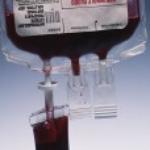 Researchers Report Progress in Making All Blood Types Universally Accepted
Researchers Report Progress in Making All Blood Types Universally Accepted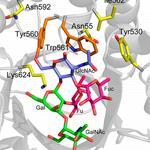 Transforming All Donated Blood Into A Universal Type
Transforming All Donated Blood Into A Universal Type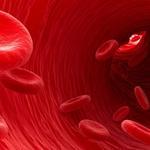 Can you change your blood type? Scientists optimistic
Can you change your blood type? Scientists optimistic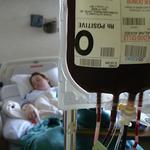 We’re Getting Closer to Creating a Universal Blood Supply
We’re Getting Closer to Creating a Universal Blood Supply
May 20, 2015
Finalist! 2015 Next Generation Indie Book Awards: Historical Fiction
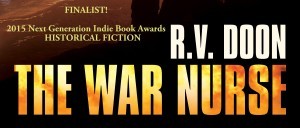
I’m happy to announce THE WAR NURSE is a finalist in the 2015 Next Generation Indie Book Awards in Historical Fiction. The winners and finalists will be recognized at a reception in New York during BEA on May 27th at the Harvard Club. I’d love to go, but sadly I have surgery scheduled.
is a finalist in the 2015 Next Generation Indie Book Awards in Historical Fiction. The winners and finalists will be recognized at a reception in New York during BEA on May 27th at the Harvard Club. I’d love to go, but sadly I have surgery scheduled.
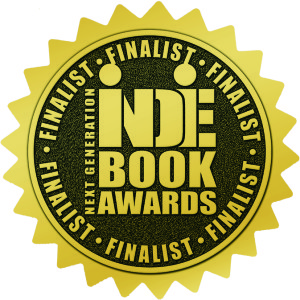
All Finalists and Winners are invited to attend an awards reception at the Harvard Club of New York City from 5:00 to 7:00 p.m. on Wednesday May 27th (during BEA).
If you’re going to BEA and are a fan of The War Nurse please pick up a catalog that will be given out listing all finalists & winners in many categories. The Next Generation Indie Book Awards is a big honor and I’m proud my book was recognized.
Thank you, Readers for leaving the book such great reviews.
March 1, 2015
NURSES LIVES MATTER

I write a cozy mystery series about a home healthcare nurse entrepreneur called “Text-A-Nurse.” I was writing Book 3 Body Magnet when the story broke of Ebola in a Dallas hospital. As a former critical care nurse, I knew immediately the staff would be swimming in chaos. I got so aggravated by the antics of the clueless leader of the CDC, I started tweeting about him throwing nurses under the bus.
Six months later, Nina Pham tells us her side of the story. Nina is the Dallas RN who contacted Ebola from patient Thomas Duncan. She’s become a nurse whistleblower by revealing her employer violated her basic HIPAA right to healthcare privacy. She also paints a horrific picture for any nurse reading when she describes the total breakdown by the hospital management teams on every level. Nina didn’t volunteer for her assignment as the hospital spokesman said, but she did her duty like every critical care nurse does daily across the country. She admitted a critical patient to her unit.
I was surprised to find out that when Nina returned from the NIH in Maryland where she became Ebola-free, she heard nothing from her employer, Texas Health Presbyterian Hospital Dallas, administrative staff. From the article, “Pham was greeted with “radio silence” from Texas Health Resources when she returned home. No one called to ask how she was doing or offered to bring food. Huh? Not even a casserole? No welcome back banner?
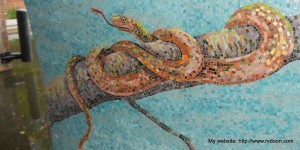
Reading that homecoming line, broke my heart. Were they punishing her for going to the NIH for the best treatment? Or were they too busy getting their PR nightmare under control with the slogan Presby Proud?
Pham is suing the hospital’s parent company for using her against her wishes for PR purposes even while hospital officials claimed publicly they were more than prepared to handle Ebola cases. Of course when Nina Pham and Amber Vinson became ill, officials had to change their tune. Nina is still being paid by the hospital, but now we’re finding out that even though she’s disease free, she still has physical symptoms. I sense a boxing round with PTSD in her future. Why?
Read her story! Her personal requests to remain anonymous were ignored. A doctor came in to film her for “educational purposes” and released the video without her consent to help boost the hospital’s public image. Shame on him! I’m betting he’s on the hospital board and has hospital stock. What about you?
Year after year, nurses are voted the most trusted of professionals, and yet we find this dedicated nurse felt violated by her employer and by at least one doctor. Her nurses and respiratory therapists performed heroically according to her (no surprises there).
I wish her well and hope the stress of the lawsuit doesn’t set back her healing. Pham received four experimental treatments and they came with horrendous known side effects. Plus, she knows there could be other non-anticipated side effects in the future.
Nina Pham may not think of herself as a whistleblower, but I do. Hospitals need to understand: They don’t own their nurses. They don’t have the right to exploit them or endanger their lives for a news clip. Here’s a new PR slogan for hospitals to chew on: NURSES LIVES MATTER.
Related articles
 Nurse who survived Ebola says hospital failed her
Nurse who survived Ebola says hospital failed her Newspaper: Nurse who survived Ebola says hospital failed her
Newspaper: Nurse who survived Ebola says hospital failed her Newspaper: Nurse who survived Ebola says hospital failed her
Newspaper: Nurse who survived Ebola says hospital failed her Ebola in the US: The aftermath for Nina Pham
Ebola in the US: The aftermath for Nina Pham Most U.S. troops fighting Ebola to be withdrawn from West Africa
Most U.S. troops fighting Ebola to be withdrawn from West Africa
February 24, 2015
Transferring Mobi files to Kindles & Using Amazon’s Cloud

I wrote Body Grab, a 10,000 word + short story, as extra content for subscribers to my new book release emails. A few wrote saying they didn’t receive Body Grab. I had to send them the mobi attached to email, and then the questions began.
How It’s Supposed to Work
After you click on my subscription link, you’re taken to a short form. Once you hit subscribe, Mail Chimp sends you an email to make sure you want to be on the list. Once you reply yes, it will serve you a second email with the link to Body Grab attached in the mobi format. Most readers knew what to do but a few didn’t. Because I intend to do more free short stories for subscribers, I thought I’d share how to side load and other tips.
Readers often win Mobi files or receive them via email from authors during giveaways or if you’ve volunteered to be part of their street team. So I thought I’d spell this out in case it comes in handy at a later time. I use a PC so I have no skill with the Apple (sorry). The terminology changes a bit too, depending if you’re on a Kindle Touch, Kindle Fire, or a Kindle Paperwhite.
You must download the Free Kindle App. It’s available for both the computer, tablet, and phone. Get it now.
Side Loading a Mobi file into the Kindle for PC software
1. Make sure your Kindle is charged and your computer is on. Punch in the password for your Kindle if you use one. Nothing will happen until you do.
2. Take the mobi file attached to the email for instance and download it and save to your desktop. Saving to my desktop is easier for me, but you can save the file wherever you want. Just download it from the email to a place on your hard drive.
3. Right click the file and go to Copy. Copy the mobi file.
4. Now browse to your documents. I hit the Microsoft icon and on the left is the programs on the computer and on the right its says documents, pictures, music, games. (default C:/users/documents). Browse the line of files under documents until you see My Kindle Content. Open this file up.
5. Paste the email mobi file you copied into My Kindle Content or drag and drop it. Remember it’s a mobi file and should go right in. (Tip: shortcut is Control+V for copy and paste).
6. Run the Kindle for PC App and the book should be there.
Side Loading a Mobi file into the Amazon Fire
1. Use the mini USB cord that came with your kindle. I understand some KFire’s didn’t come with a cord, but if you haven’t bought one yet, and you have an android phone, you can use it. The cord is the only way to synch the Amazon Fire to your computer. Connect the Kindle to the PC. Punch in Kindle password for your device if you use one.
2. Know where the mobi file you downloaded from the email is. (I put mine on the desktop).
3. In a Kindle Fire your books are under the “documents folder”. Don’t open the “books” folder. This is a quirk. ( A tip from a reader to try. “On the PC select the Microsoft key +E to open up the kindle.” Which ever way you choose there should be a temporary drive open under “computer”. Now open the folder on the computer. Note you should have two files open. One contains the downloaded Mobi file and the other contains a file in a subfolder under Fire called “documents.” Note this is not the normal My documents file on every PC. This is a Kindle Fire file called documents. Kindle Fire doesn’t list your ebooks like the Kindle Touch or the Paperwhite. You’re in the right place if you see something called Kindle Fire users guide under the documents listed.
4. You can copy and paste or drag the ebook file from the computer to the Kindle File. (Dragging is the hardest part for me and always takes more than one try. Hope you have better luck).
5. Disconnect the Fire device safely from your computer. I’d check to make sure the book transferred first.
Side Loading a Mobi File into a Kindle Touch
1. Connect the cable which came with your Kindle to your PC. If your device is password protected, remember to punch it in. There can be no transfer until you do. On the Kindle Touch the drive switches to a USB Drive mode.
2. Again make sure the free mobi file has been downloaded to a place you can easily find. (I use desktop.)
3. Kindle on E drive opens. Click the folder called “documents”. All your eBooks currently on your kindle will display.
4. You can copy and paste or drag the saved mobi into the kindle “documents” folder.
5. Safely eject your kindle. The Kindle touch returns to reading mode. Your book will be waiting for you.
I also offered one reader to send her the mobi of Body Grab through Amazon’s cloud. I asked for her kindle email and she didn’t know she had one.
Using the Amazon Cloud to read files
1. To find out your personal kindle cloud address go to Amazon.com.
2. Look to the right of the screen and locate my account. Underneath my account are several pages. Click on Manage your content and devices.
3. You’ll be taken to you password log in. Fill it in and the screen will say: Your Content, Your Devices, and Settings.
4. Your very own kindle email address will be listed under “your devices.” You can send documents to this address as long as they don’t have over 25 attachments and this is a free service. Here’s how you use it.
1. Before anyone can send you a document to your kindle email address, you have to let them in. This is a safety precaution that stops spam.
2. Go back to Manage your content and devices.
3. From settings, scroll down to Personal document settings.
4. Under Approved Personal documents list, either check if the person’s email address is already there or add it under a new approved email address. Click Add address.
5. It’s even easier to delete the address so no worries.
You’ re done. To read more about Amazon Cloud file sharing go here.
Leave me a comment and if you have better tips please leave them in the comments. Thanks for reading!
Join my subscription list and get a free copy of Body Grab.



